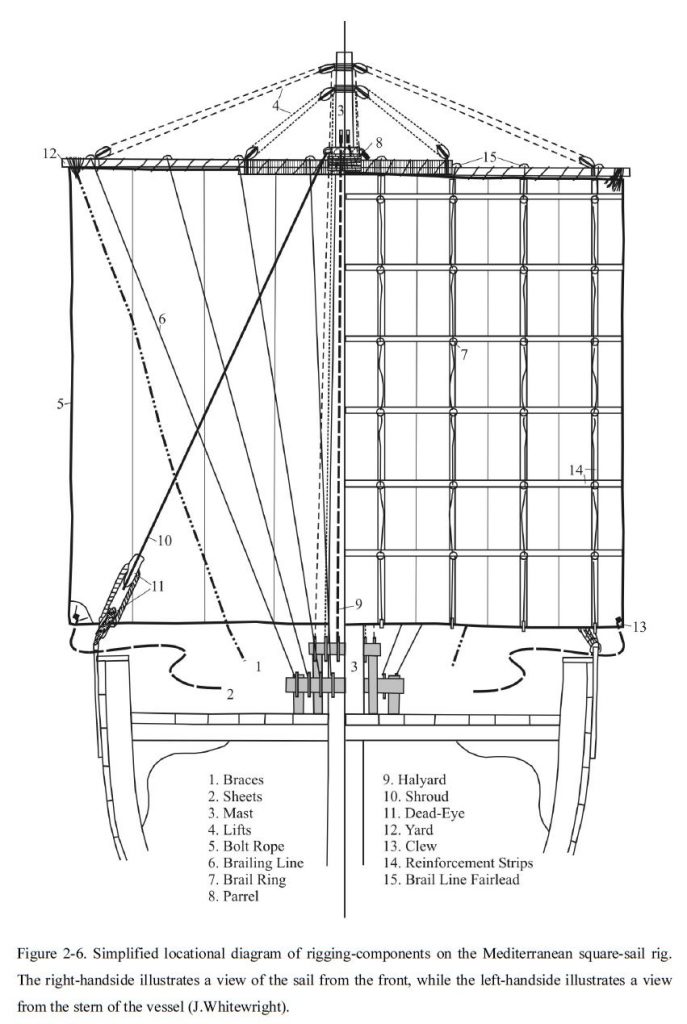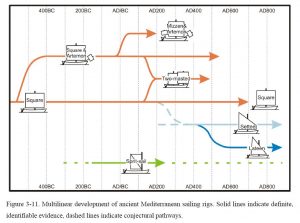The lateen/settee rig was probably invented in the 2nd c. AD and was widely adopted in the 5th c. AD. This does not mean that square sails were abandoned, as they were still in use on windjammers at the end of merchant sailing in the early 20th c.. Several concepts thus coexisted over very long periods of time (Julian Whitewright[8], Pascal Arnaud[1], Rod Heikell [1]).
The various sailing rigs obviously had pros and cons and mariners made their own choices. Note that modern sailors are biased by the modern triangular Bermuda rig designed for sailing-boat racing in the 19th c.[2].
From the point of view of a sailor sailing a square-rigged ship at close reach, it was worth trying to reduce the length of sail-cloth susceptible of sagging on the luff side by pulling down the windward end of the yard. This would probably leave too much sail abaft the mast so that the ship would easily luff[3], but it opened the way to the triangular shape of the lateen/settee rig pointing into the wind. Furthermore, the lateen sail consisted of less components than the square sail, but it required more crew to be handled.
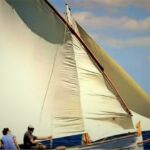
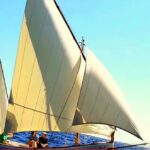
A drawback of the lateen sail is that it is difficult (impossible with strong wind) to take the yard from one side of the mast to the other side, thus leading to a favoured tack when the yard is downwind of the mast and an unfavourable tack when the yard is upwind of the mast (so-called “bad tack”).
Whitewright (2011) shows that the lateen and settee rigs performed only very slightly better to windward than square sails as it allowed sailing 55 to 65° off the wind direction, while a square sail would allow 60 to 65°. The ‘velocity made good’ was only 1 to 2 knots in both cases (with moderate wind and calm sea). Hence, there is very little difference in the overall performance of both rigs and this explains why both coexisted for many centuries.
The 5th century Kelenderis mosaic below shows a ship with reefed trapezoidal settee sail close to a lateen rig[4].
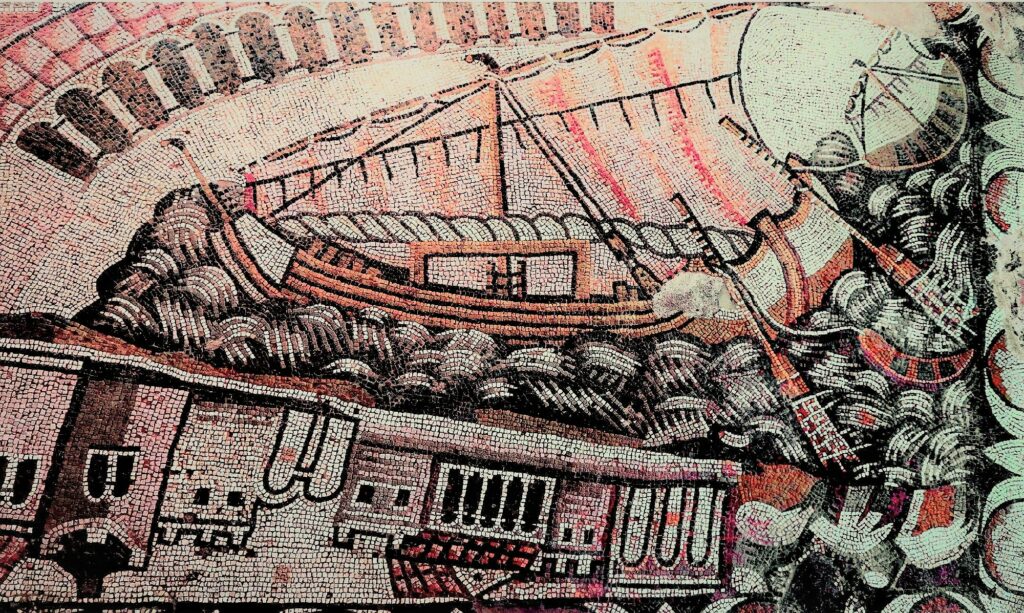
showing a harbour scene with a ship in full action in a rough sea.
(source: http://www.cka.org.tr/dosyalar/bir_bakista_mersin.pdf).
Note that although the harbour city is depicted, the ship is sailing at close reach with a reefed sail in rough seas with many waves. Such a picture of a sailing ship in full action is very rare as artists never had an opportunity to see this from the shore.
Sailors are not conservative at all when it comes to sail settings
and they may very well have used the triangular setting of the square sail for many centuries before the Kelenderis mosaic picture.
Notes
[1] HEIKELL, R., 2015, “Sailing Ancient Seas”, Taniwha Press, UK.
[2] https://en.wikipedia.org/wiki/Bermuda_rig
[3] ARISTOTLE (Mechanica, 851-b) already pointed this out, see POMEY, P., 1997, “La Navigation dans l’Antiquité”, p 80-82.
[4] POMEY, P., 2017, “À propos de la voile latine : la mosaïque de Kelenderis et les Stereometrica (II, 48-49) d’Héron d’Alexandrie”, Archaeonautica, 19, 2017, (p 9-25).
WHITEWRIGHT, J., 2009, “The Mediterranean Lateen Sail in Late Antiquity“, The International Journal of Nautical Archaeology (2009), 38.1: 97–104.
